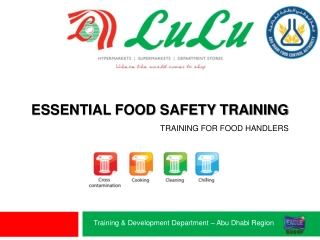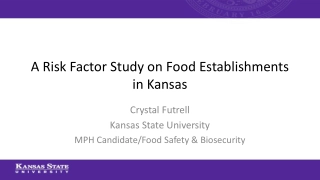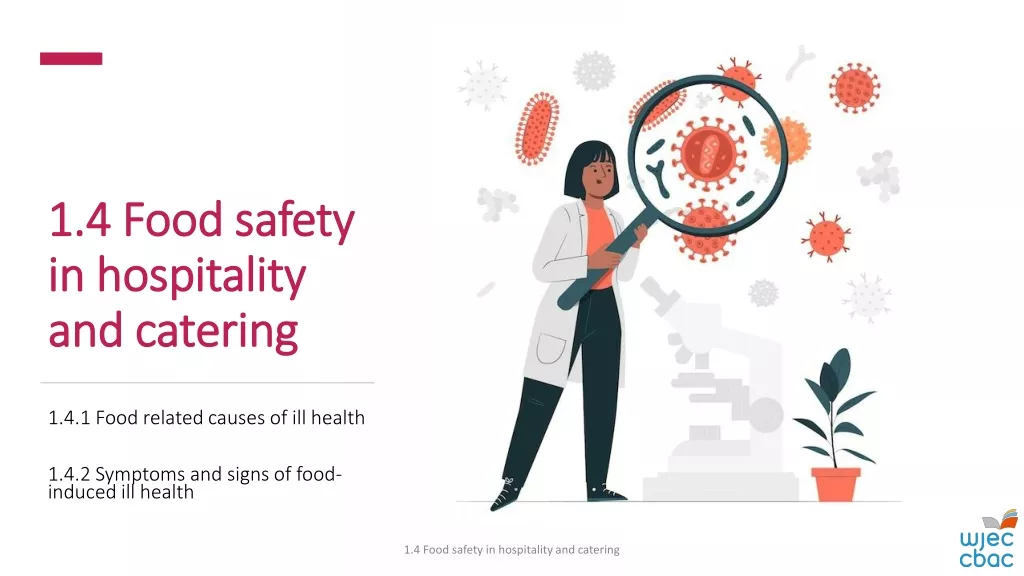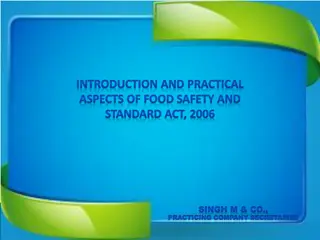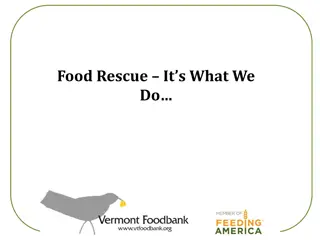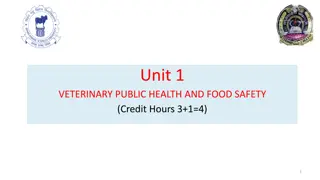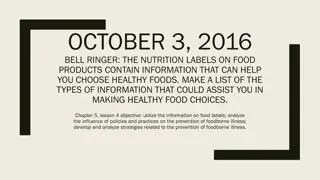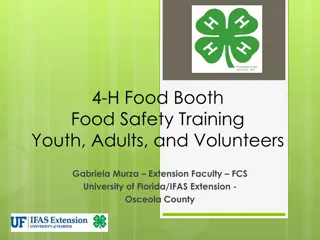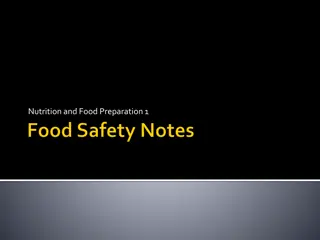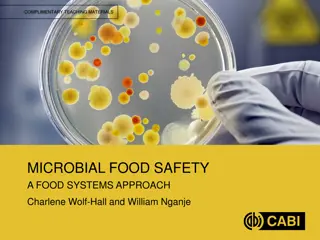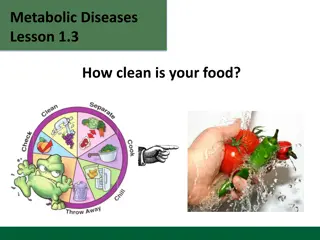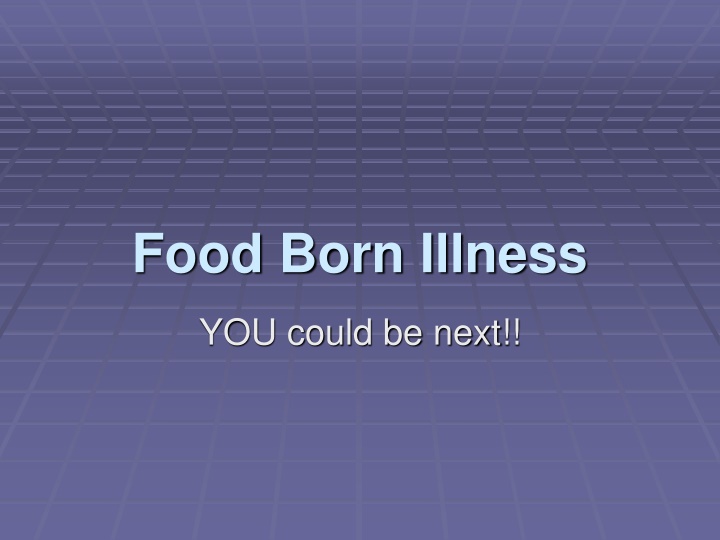
Foodborne Illness: Causes, Symptoms, and Prevention
Discover the risks of foodborne illness caused by bacteria like Salmonella and E. coli. Learn about symptoms, prevention methods, and the importance of epidemiology in tracking outbreaks to safeguard public health.
Download Presentation

Please find below an Image/Link to download the presentation.
The content on the website is provided AS IS for your information and personal use only. It may not be sold, licensed, or shared on other websites without obtaining consent from the author. If you encounter any issues during the download, it is possible that the publisher has removed the file from their server.
You are allowed to download the files provided on this website for personal or commercial use, subject to the condition that they are used lawfully. All files are the property of their respective owners.
The content on the website is provided AS IS for your information and personal use only. It may not be sold, licensed, or shared on other websites without obtaining consent from the author.
E N D
Presentation Transcript
Food Born Illness YOU could be next!!
What is food born illness? A. Illness resulting from eating food contaminated w/ a bacteria or virus. B. May cause outbreaks where many people become sick, with the same illness at the same time. (about 10% of a population) 1. Usually contaminated food comes from a location away from home (restaurant, baseball game etc.).
Epidemiology The tracking of outbreaks of illness (not always food illness) to discover where the original source of contamination came from. Why? To PREVENT it from happening again!
Salmonella A.Bacteria 1. Many types live in poultry & swine (birds & pigs) 2. Can be found in environment a. water b. soil c. insects d. animal feces 3. Found in undercooked meats, eggs a. 1 in every 3 eggs is contaminated! b. Illness can be avoided if eggs are cooked properly.
3 Conditions BAC need to live 1.Warmth 2.Moisture 3.Nutrients
2 factors that kill BAC! 1. Extreme heat (this is BEST!) 2. Extreme cold Pasteurization - a heat treatment used to kill bacteria. (commonly used with milk & juice)
Symptoms 1. Nausea 2. Vomiting 3. Stomach cramps 4. Diarrhea 5. Fever 6. Headache CAN be fatal - RARE!
After Ingestion of bacteria 1. Will be sick within 6-72 hours after eating contaminated food. (NOT usually sick immediately after eating!) 2. Symptoms usually last 4-7 days 3. Most recover without antibiotics 4. Diarrhea can be severe enough to hospitalize person (dehydration)
E. coli A.Bacteria that produces a powerful toxin & can cause severe illness. 1. Most strains harmless 2. Live in intestines of healthy humans & animals. 3. Found in undercooked ground beef & non- pasteurized milk. A. Meat can become contaminated during cattle slaughter. B. Bacteria on cow s udders or on equipment can get into milk.
IMPORTANT vocabulary! Cross Contamination - moving bacteria from one source to another. Host - original source of contamination. Vector - responsible party (object, machine) that actually carries the bacteria from source to source.
Symptoms 1. All the same symptoms as Salmonella. 2. PLUS you CAN have .bloody diarrhea! In children under 5 years old & in the elderly it can cause kidney failure, & destroy red blood cells - RARE, only 2- 7% of cases.
After Ingestion of E.coli 1. Illness usually lasts 5-10 days 2. Most people recover w/out antibiotics 3. Should NOT use anti-diarrhea medications. WHY? - keeps BAC in body & allows BAC to grow in warm, moist, conditions (& the BAC has lots of nutrients!) so it GROWS!
Prevention 2. Keep raw meats separate from ready- to-eat foods (salads, breads etc.) 3. Wash hands, counter & utensils with hot, soapy water after touching raw meat. 4. Never place cooked meat on the same plate that held raw meat. 1. Cook all meat well a. Use meat thermometer b. Thickest part of meat should be - - 160 - beef - 170 - poultry c. If you don t have a meat thermometer, cut into center of meat & make sure it is NOT pink!
Prevention (continued) 5. Drink only pasteurized milk and juice. - Products that have been pasteurized a. Will say pasteurized on the label b. May be sold at room temperature 6. Wash fruits & vegetables well (dry with paper towel). 7. Wash hands after using restroom or changing diapers to reduce risk of spreading infection.
This powerpoint was kindly donated to www.worldofteaching.com http://www.worldofteaching.com is home to over a thousand powerpoints submitted by teachers. This is a completely free site and requires no registration. Please visit and I hope it will help in your teaching.


